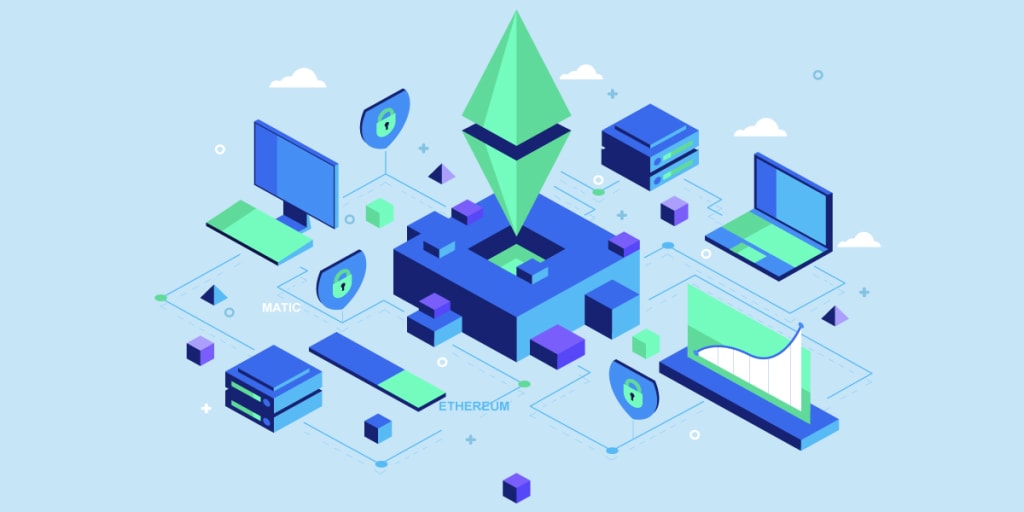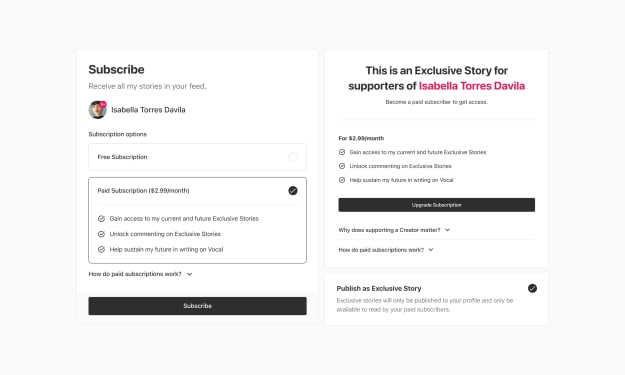The Rise of Decentralized Blockchain Applications: Everything You Need to Know
Explore the transformative world of decentralized blockchain applications, including their market dynamics, features, benefits, development process, and associated costs, in this comprehensive guide.

The blockchain market has seen exponential growth over the past decade, transforming various industries and reshaping the digital landscape. As of 2024, the global blockchain market is valued at approximately $20 billion, with projections indicating it could reach $163.83 billion by 2027, growing at a compound annual growth rate (CAGR) of 56.3%. This remarkable growth is fueled by the increasing adoption of decentralized applications (dApps) across sectors such as finance, healthcare, supply chain, and entertainment. In this article, we will explore the world of decentralized blockchain applications, covering their market dynamics, features, benefits, development process, and associated costs.
Understanding Decentralized Blockchain Applications
What are Decentralized Applications (dApps)?
Decentralized applications, commonly known as dApps, are digital applications or programs that run on a blockchain or peer-to-peer network of computers instead of relying on a single central computer. Unlike traditional applications, dApps operate in a decentralized environment, ensuring enhanced security, transparency, and user control.
Market Overview
The decentralized application market has witnessed significant growth, with thousands of dApps being developed and deployed across various blockchain platforms. Ethereum, the pioneer of smart contracts, hosts the largest number of dApps, with over 3,000 active applications. Other popular platforms for dApp development include Binance Smart Chain, Solana, Polygon, and Avalanche.
The popularity of dApps can be attributed to several factors, including the rise of decentralized finance (DeFi), non-fungible tokens (NFTs), and blockchain gaming. As of 2024, the total value locked (TVL) in DeFi protocols exceeds $100 billion, while the NFT market has generated over $40 billion in sales.
Creating a decentralized blockchain application is a great idea because it enhances security, transparency, and user control while reducing operational costs. With the blockchain market rapidly growing, developing a dApp positions you at the forefront of technological innovation and industry transformation.
Features of Decentralized Blockchain Applications
1. Decentralization
dApps operate on a decentralized network, eliminating the need for intermediaries and central authorities. This ensures greater transparency and reduces the risk of single points of failure.
2. Transparency
All transactions and activities on dApps are recorded on a public ledger, making them transparent and auditable. This transparency builds trust among users and stakeholders.
3. Security
Blockchain technology offers robust security features, including cryptographic algorithms and consensus mechanisms. This makes dApps resistant to hacks and fraud.
4. User Control
Users have full control over their data and assets on dApps. They can interact directly with the application without relying on third parties, ensuring data privacy and ownership.
5. Smart Contracts
Smart contracts are self-executing contracts with the terms of the agreement directly written into code. They automate processes and ensure trustless interactions between parties.
6. Interoperability
Many dApps are designed to be interoperable, allowing them to interact with other blockchain networks and traditional systems. This enhances their functionality and user experience.
Benefits of Decentralized Blockchain Applications
1. Enhanced Security
The decentralized nature of dApps and the use of blockchain technology provide a high level of security. This reduces the risk of data breaches and unauthorized access.
2. Lower Costs
By eliminating intermediaries and automating processes through smart contracts, dApps can significantly reduce operational costs. This is particularly beneficial in industries such as finance and supply chain management.
3. Increased Efficiency
dApps streamline operations by automating tasks and removing bottlenecks. This leads to faster transaction times and improved overall efficiency.
4. Global Accessibility
Anyone with an internet connection can access dApps, making them available to a global audience. This inclusivity is particularly important for financial services in underserved regions.
5. Innovation and Flexibility
dApps enable developers to create innovative solutions and experiment with new business models. The flexibility of blockchain technology allows for continuous improvement and adaptation.
How to Create a Decentralized Blockchain Application?
1. Define the Use Case
The first step in creating a dApp is to define the use case and identify the problem it aims to solve. This involves market research and understanding the needs of the target audience.
2. Choose the Right Blockchain Platform
Selecting the appropriate blockchain platform is crucial for the success of the dApp. Factors to consider include scalability, transaction speed, security, and developer community support. Popular platforms for dApp development include Ethereum, Binance Smart Chain, Solana, and Polygon.
3. Design the Architecture
Designing the architecture involves creating the blueprint for the dApp, including the user interface (UI), backend infrastructure, and smart contracts. This stage also includes defining the data storage and retrieval mechanisms.
4. Develop Smart Contracts
Smart contracts are the backbone of dApps, enabling automated and trustless interactions. Developers write smart contracts using programming languages such as Solidity (for Ethereum) or Rust (for Solana). These contracts are then deployed on the blockchain.
5. Frontend Development
The frontend of the dApp involves creating the user interface and ensuring a seamless user experience. This includes designing the layout, integrating with the backend, and implementing user authentication mechanisms.
6. Testing and Debugging
Thorough testing is essential to identify and fix any bugs or vulnerabilities in the dApp. This involves unit testing, integration testing, and security audits to ensure the application functions as intended.
7. Deployment
Once the dApp has been thoroughly tested, it is deployed on the chosen blockchain platform. This involves publishing the smart contracts and making the application available to users.
8. Maintenance and Updates
Post-deployment, the dApp requires ongoing maintenance and updates to fix bugs, add new features, and ensure compatibility with evolving blockchain standards.
Cost of Developing a Decentralized Blockchain Application
The cost of developing a dApp varies depending on several factors, including the complexity of the application, the blockchain platform used, and the development team's expertise. Here is a breakdown of the costs involved:
1. Basic Features
Smart Contract Development: $5,000 - $15,000
Frontend and Backend Development: $10,000 - $30,000
Testing and Debugging: $5,000 - $10,000
2. Advanced Features
Interoperability: $10,000 - $25,000
Security Audits: $10,000 - $20,000
User Authentication and Wallet Integration: $5,000 - $15,000
3. Overall Development Cost
Small-scale dApp: $20,000 - $50,000
Mid-range dApp: $50,000 - $150,000
Enterprise-level dApp: $150,000 - $500,000
Conclusion
Decentralized blockchain applications are revolutionizing various industries by offering enhanced security, transparency, and user control. With the blockchain market poised for significant growth, the development and adoption of dApps will continue to rise. By understanding the features, benefits, and development process of dApps, businesses and developers can harness the power of blockchain technology to create innovative and efficient solutions.
FAQs
1. What are decentralized applications (dApps)?
Decentralized applications, or dApps, are digital applications that run on a blockchain network, providing enhanced security, transparency, and user control compared to traditional applications.
2. Which blockchain platforms are best for dApp development?
Popular blockchain platforms for dApp development include Ethereum, Binance Smart Chain, Solana, and Polygon, each offering unique features and benefits.
3. What are the key features of dApps?
Key features of dApps include decentralization, transparency, security, user control, smart contracts, and interoperability.
4. How much does it cost to develop a dApp?
The cost of developing a dApp varies based on its complexity and features. A basic dApp can cost between $20,000 and $50,000, while an enterprise-level dApp can range from $150,000 to $500,000.
5. What are the benefits of using dApps?
Benefits of dApps include enhanced security, lower costs, increased efficiency, global accessibility, and the ability to foster innovation and flexibility.
6. How do smart contracts work in dApps?
Smart contracts are self-executing contracts with terms written into code. They automate processes and ensure trustless interactions between parties on the blockchain.
7. What industries can benefit from dApps?
Industries such as finance, healthcare, supply chain, and entertainment can benefit significantly from the adoption of dApps due to their inherent advantages in security, transparency, and efficiency.
8. What is the future of decentralized applications?
The future of decentralized applications is promising, with continued growth expected in DeFi, NFTs, blockchain gaming, and other innovative use cases, driven by advancements in blockchain technology and increasing adoption.
About the Creator
Enjoyed the story? Support the Creator.
Subscribe for free to receive all their stories in your feed.






Comments (1)
Great work.